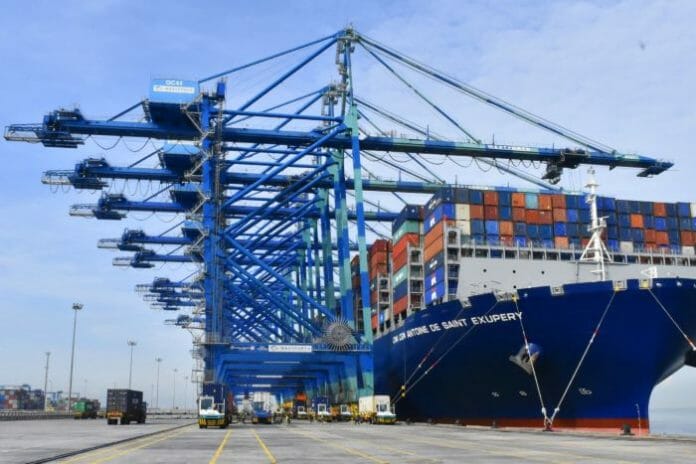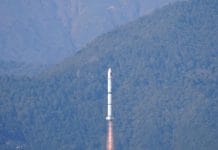The Seaport and Logistics sector’s earnings delivery were better sequentially in the recently-concluded 2QCY23 results.
Kenanga Research cited today (Sept 8) that
Westports Malaysia saw a slight top-line growth due to a stronger container volume, partially offset by lower yields. However, it earnings rose significantly, thanks to lower fuel cost and non-recurrence of the one-off prosperity tax.
Meanwhile, Bintulu Port Holding’s cargo volume eased as China’s reopening failed to significantly lift demand for LNG, aluminium and manganese.
On a brighter note, LNG exports to Japan and South Korea were brisk and will pick up further in 2H ahead of the winter months.
POS disappointed as the recovery in its aviation and logistics operations was negated by the continued deterioration in its postal segment.
Meanwhile, SWIFT’s top-line continued to grow driven by the economy reopening and strong petrochemical product and gateway cargo volumes, but its bottom-line was weighed down by additional cost incurred to support its fleet and warehouse expansion.
Uninspiring global trade, stricter regulations
The WTO projects global merchandise trade volumes to only inch up by 1.7% in CY23 vs. a 2.7% expansion in CY22, amid the global economic uncertainty.
China’s re-opening did not provide much impetus to the global economy while consumer confidence and spending globally have been weighed down by sustained elevated inflation, rising interest rates and the slowing global economy.
Additionally, stricter regulations on carbon emissions may pose new challenges to global trade, particularly, one from the United Nations’ International Maritime Organization (IMO) and another from the European Union (EU).
While the exact implications of the regulation of IMO and EU’s Carbon Border Adjustment Mechanism (CBAM) on the seaport and logistics sectors remain unclear (especially for CBAM which is still pending finalisation), the volume of containers heading to the EU will certainly be affected (about 18% of container throughput under Asia-Europe trade), especially those originating from China, which is a major exporter of iron, steel and aluminium to the EU.
Under the new IMO rules, effective January 2023, all ships must report their carbon intensity and will be rated accordingly. The ships must record a 2% annual improvement in their carbon intensity from 2023 through 2030 or face being removed from service.
Meanwhile, the EU’s CBAM policy could disrupt the exports of certain commodities (iron and steel, cement, aluminium, fertiliser, electricity, hydrogen) to the EU. During the transition period between Oct 2023 and Dec 2025, EU importers must report embedded emissions in goods imported on a quarterly basis, as well as any carbon price paid to a third country.
When the CBAM takes full effect starting 2026, importers will need to buy carbon credits reflecting the emissions generated in producing them.
All these do not augur well for containerised seaport operator Westports. However, Kenanga believe Bintulu Port will be able to weather these macro challenges better thanks to: (i) its stable operation in the handling of LNG cargoes, (ii) a potential tariff hike at Bintulu Port as well as (iii) the long-term growth potential of Samalaju Industrial Port’s hinterland in Samalaju, Sarawak driven by the growing investment in heavy industries.
Logistics to ride on e-commerce boom
Meanwhile, Kenanga sees a bright spot in the domestically-driven 3PL sector which is less vulnerable to external headwinds and buoyed by the booming e-commerce. Industry experts project the local e-commerce gross merchandise volume to grow at a CAGR of 7% from 2023 to 2027, with size reaching RM1.9t by 2027 from RM1.4t in 2023.
The booming e-commerce will spur demand for distribution hubs and warehouses to enable: (i) just-in-time (JIT) delivery, (ii) reshoring/nearshoring to bring manufacturers closer to end-customers, (iii) efficient automation system including interconnectivity with the customer system, and (iv) warehouse decentralisation to reduce transportation costs and de-risk the supply chain.
There is also strong demand for cold-storage warehouses on the back of the proliferation of online grocery start-ups.
Kenanga’s sector top picks are:
• BIPORT for: (i) the steady income stream from handling LNG cargoes for Malaysia LNG Sdn Bhd (that typically makes up close to 50% of its earnings), (ii) a potential step-up in earnings if Bintulu Port is granted a significant hike in its port tariffs, and (iii) the tremendous growth potential of Samalaju Industrial Port backed by rising investment in heavy industries in Samalaju Industrial Park.
• SWIFT for: (i) its leading position in the Malaysian haulage business commanding close to 10% market share, (ii) its value-added integrated offerings resulting in a superb pre-tax profit margin of 10% compared to industry average of 4%, and (iii) the tremendous growth potential of its warehousing business, riding on the booming domestic e-commerce.









